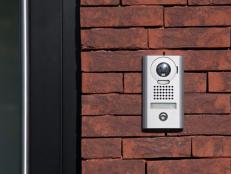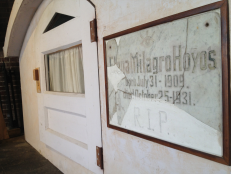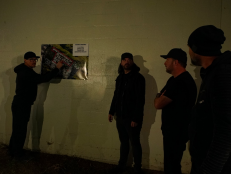12 Tips for Navigating Airports with Kids
Making your way through a busy airport with little ones in tow can be made easier by considering these tips.

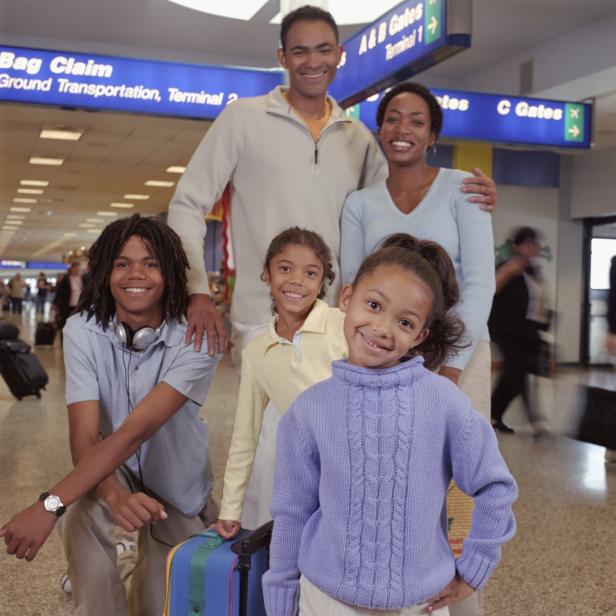
Getty Images/Jim Arbogast
Negotiating airports can be stressful enough without the added responsibility of children, but with a little planning, it can be a fun family experience that introduces kids to a love of travel and a taste of responsibility and independence. In my years of traveling as both a single dad and with my wife with three kiddos in tow, here are some tips that have worked for me that hopefully will help you have an enjoyable time introducing your child or children to the excitement of airports and flying.
1: In the days leading up to your trip, sit in the rear seat with your child as your partner drives around town during your family outings. This allows you to talk to your child about what it will be like on the airplane, and allow you to see some of the logistics you’ll encounter, such as the space you’ll have to work with. Doing these “dry runs” will make your child more comfortable and excited about traveling when the day comes, and give you some insight as to what to expect and how to better prepare.
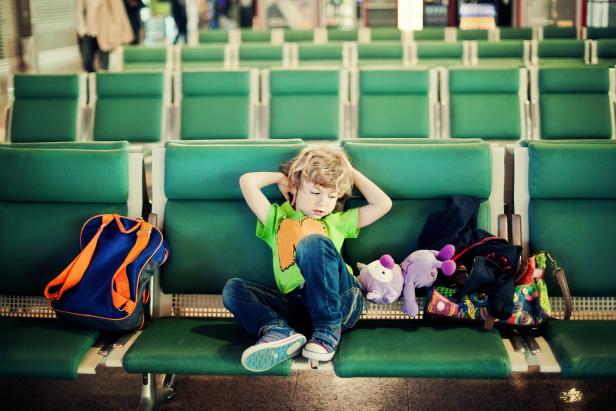
Getty Images/Carol Yepes
2: Having your child pick out a small backpack that fits them well gives them a sense of trip buy-in and importance. Have them wear it in the days beforehand to get used to it and identify any issues (such as overloading). Getting fun, useful things for the plane such as a water bottle with a clip that can hook onto the seat will add to their excitement and feeling of being “grown up.” My kids enjoyed having control over a small flashlight and glow sticks as a comfort against dark airplanes, and I made sure the light didn’t bother other passengers. Make sure you have a flashlight, too, to find items under the seat even during daytime flights. Cell phones have flashlights, sure, but that uses valuable battery life.
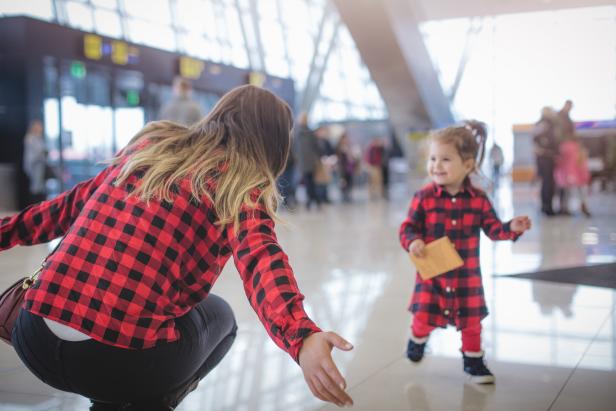
Getty Images/FluxFactory
3: Make a note of what your kids are wearing before arriving at the airport, and consider even taking a photo of them. Bold color schemes can help parents quickly locate their kids in the event they wander off in the second that you’re checking the gate number. Dark outfits hide stains better. A change of clothes in your carry on for both kids and parents in the event of spilled drinks, or worse, is always a good idea.
4: “Never pass up a restroom” is the parent’s creed, but never more so when flying. When boarding or choosing your seats online, consider getting a seat close to the restrooms. Even if your child says they don’t have to go, it’s good to get up and walk on flights and gives them the opportunity to see the plane. If you have children in diapers, check beforehand to see which bathrooms have changing tables (they’re usually located in the front of the plane). Remember when flushing the toilet on airplanes that the sound can be alarming (even for adults), so warn your child beforehand and close the lid. It goes without saying to carry ample cleaning wipes and hand sanitizer. My go-to kit is kept in a clear zip bag with wipes, hand sanitizer, diapers and diaper bags that I can grab at a moment’s notice. I also carry children's' pain medication and ear drops in case air pressure becomes an issue. Another trick for dealing with air pressure pain that I remember from overseas trips in my youth: Ask the flight attendant for two cups filled with napkins or towels soaked in hot water and drained, then place the cups over your child's ears. As the heat cools it creates a slight vacuum that helps equalize ear pressure.
5: One invaluable piece of gear my wife and I used with our young sons was a foldable garden or sports wagon instead of a stroller. It's not the product's intended use, but I could pull both of my young boys in the wagon while I wore a backpack and pulled a roller bag, and we even had it worked to where the oldest could lay down while the infant rode in his car seat on top. These wagons stow secure and flat, and gate-checking them as we would a stroller was never a problem. We could whisk through airports with a small footprint and not have to carry any kids. Also, check out these handy carriers for toting your child in his or her car seat through the airport.
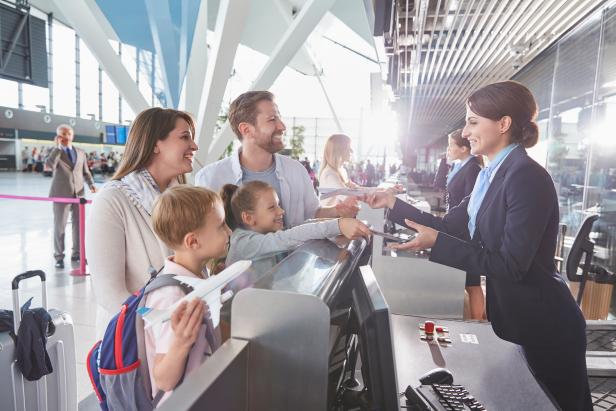
Getty Images/Caiaimage/Chris Ryan
6: Use travel to introduce new responsibilities to your kids. Print two copies of their boarding passes, and give them a set to keep track of (keep the other handy just in case). Have them pack their small backpack with their things (with oversight) the day before the trip, and keep in mind any security restrictions (anything resembling a weapon, liquids, gels, etc.). Ask them questions and what they think of the airport to engage them and see where their thought processes are at. For older kids, ask them to figure out gate numbers and shuttle schedules. I’ve found that the more kids are made a part of the experience, the less bored and better behaved they’ll be, and they’ll learn to become skilled, independent travelers.
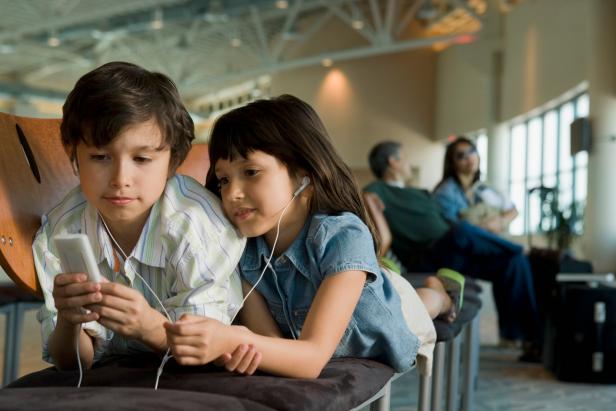
Getty Images/Mark Edward Atkinson
7: It should go without saying, but video devices should have earphones. This is a courtesy to other travelers, but also earphones cut down on the sensory overload found at airports and airplanes, help your child relax and (fingers crossed) even fall asleep on flights. If you don’t have tried and true headphones for your kids already, buy some before your departure date to avoid airport prices and to make sure they comfortably fit your child’s head. Have two kids watching the same show? Get a headphone splitter so that they (or you) can both listen.
8: If you are traveling with children that have a different last name than yours, make sure to check well ahead of time for any supporting documentation you may need for domestic and international flights, such as copies of birth certificates (having a copy of your kid’s birth certificates is always a good idea when flying). While TSA doesn’t require identification for minors, boarding policies vary from airline to airline. Many require a doctor’s letter stating that it’s okay for infants 14 days or younger to fly, and valid proof of age is required for lap children. Passports are required for every person regardless of age traveling internationally. TSA agents sometimes ask kids a question or two to be friendly, and also to read if anything seems amiss. I tell my kids beforehand that TSA agents are friendly and like to chat. All TSA checkpoints have a designated family lane (denoted by a green dot) that are designed to accommodate those traveling with kids. Per the TSA's (humorous) holiday blog: “Frequent flyers hate it when they’re in line behind a family, and guess what... families hate it when the frequent flyer is behind them tapping their foot and sighing. That’s why we created Family Lanes. They’re designed to let families take their time and ask questions without feeling rushed by the experienced frequent flyers who can zip through a checkpoint in no time.”
9: If your child can walk, they’ll have to pass through security devices by themselves, unless the parent requests a pat-down. Infants are carried through security by their parent. Children who require a wheelchair or walker will not be removed from their device, and will be screened by an officer. Infants may be carried through in baby slings, but additional screening may be requested by TSA. Children will never be separated from parents, but the quick procedure can be unnerving none the less. Prepare your child before arriving at the airport by explaining what will happen. I called the scanners the “magic portals to the airport,” and my kids always enjoy it. Children 12 and younger can leave their shoes, jackets and hats on. I always wear a jacket with pockets that I can quickly dump any items into and send through the x-ray machine so that I’m not fumbling and leave my kids waiting on the other side. Strollers are folded and sent through the x-ray machine if they fit, and inspected by an officer if they're too large for the machine.
10: While liquids and gels in excess of 3.4 ounces per container are not permitted to pass through TSA security, an exception is made for baby formula, breast milk and ice packs when traveling with an infant. Notify a TSA agent that you're carrying larger quantities of liquids, and have them easily accessible. A TSA agent will conduct additional screening of your items, but you'll be able to recover them past security. If you're traveling with liquid medication or necessary liquid food in excess of 3.4-ounces per container for older children, the procedure is the same. If possible, a doctor's note explaining the situation can be helpful.
11: Many airports have play areas where kids can burn off energy, and parents can take a breather, such as Chicago’s O’Hare International Airport and DFW. Most airport websites have excellent sections devoted to traveling with kids and available facilities such as family bathrooms, playgrounds, nursing rooms and other related content. Before traveling to the airport, find areas of interest near your airline’s terminal, and work in extra time to enjoy what’s offered, if possible.
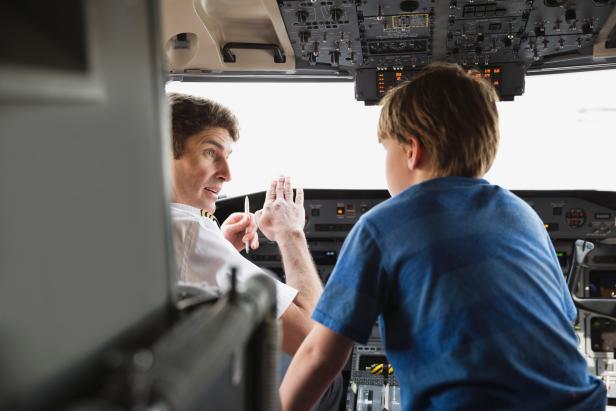
Getty Images/Hero Images
12: When I was a child in the last century kids were given plastic wings and a tour of the cockpit during flight. Times have changed, but the experience of being a child on a plane is still as fun and exciting. Looking down on the tops of clouds or seeing city lights from 26,000 feet is still magical. Many airlines at least have stickers to give children before the flight, and often times pilots are happy to show children the cockpit at the gate before they have to secure their door; ask a flight attendant when boarding to see if that would be possible. Take advantage of the many videos that explain airports and airplanes to young children. Who knows? The excitement of an airplane trip may spark a lifelong love of science and travel for your daughter or son.

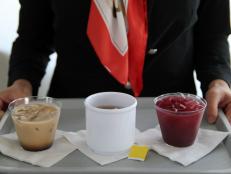

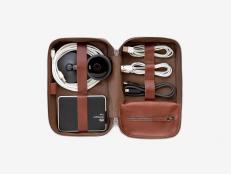
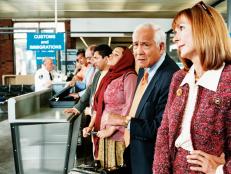
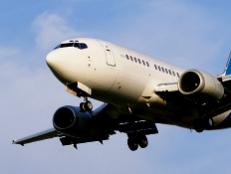

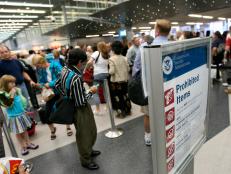
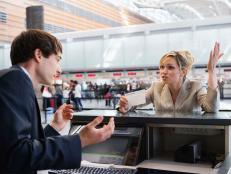
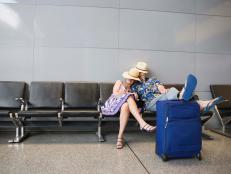








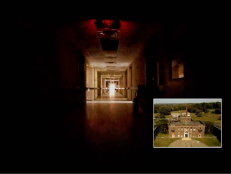





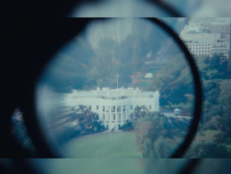


.jpg.rend.hgtvcom.231.174.suffix/1674758726773.jpeg)







